| Dataset | Sensors | Dates | Data |
|---|---|---|---|
| Global | |||
| Surface WAter Microwave Product Series (SWAMPS) Inundated Area Fraction Learn More | |||
SWAMPS v3.2
| SSM/I, SSMIS, ERS, QuikSCAT, ASCAT | 1992‑2020 | Download |
| SWAMPS v2.0 | AMSR-E, QuikSCAT | 2002‑2009 | GeoTIFF ENVI 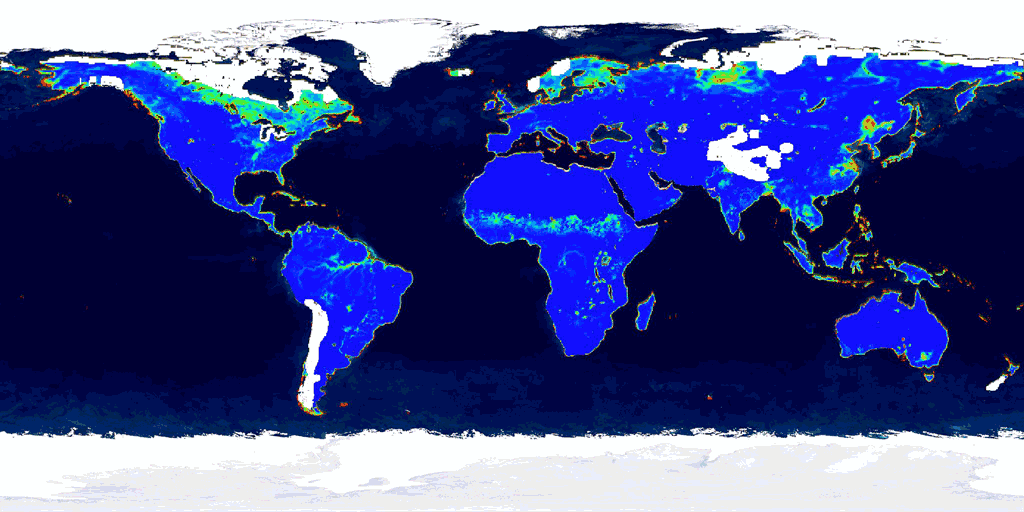 Browse Browse |
| North America | |||
| North America JERS-1 Mosaics Learn More | |||
| Summer Backscatter Mosaic | JERS-1 | 1998 | Download Browse Browse |
| Summer Texture Mosaic | JERS-1 | 1998 | Download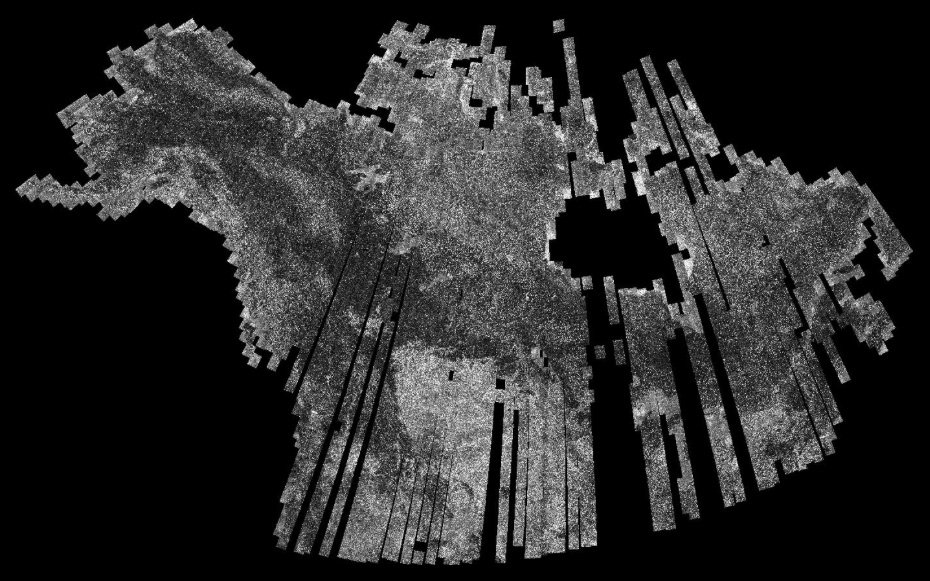 Browse Browse |
| Winter Texture Mosaic | JERS-1 | 1997-1998 | Download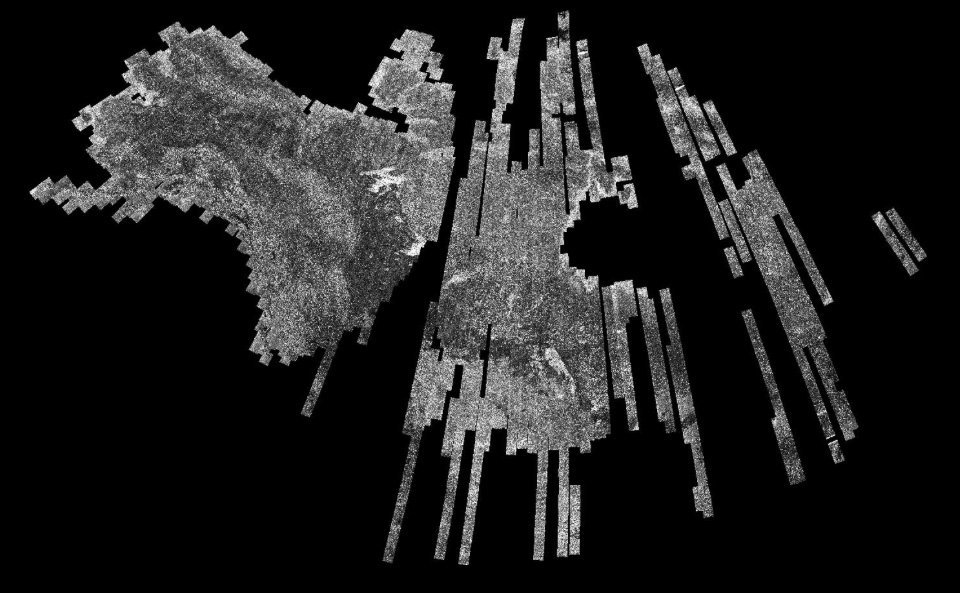 Browse Browse |
| Alaska | |||
| PALSAR Wetlands Map Learn More | ALOS PALSAR | 2007 | GeoTIFF KEA file 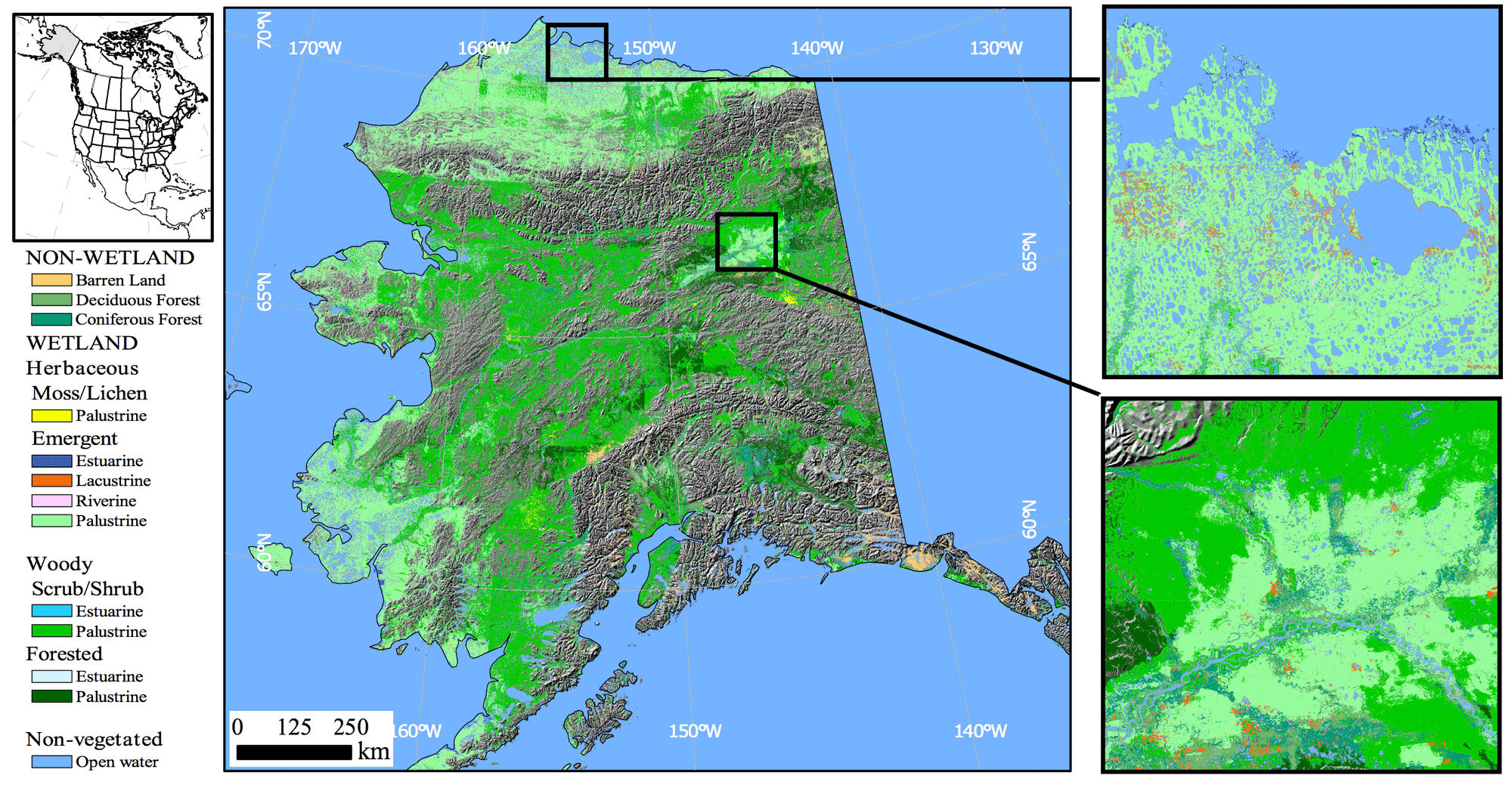 Browse Browse |
| JERS-1 Wetlands Map Learn More | JERS-1 | 1997-1998 | GeoTIFF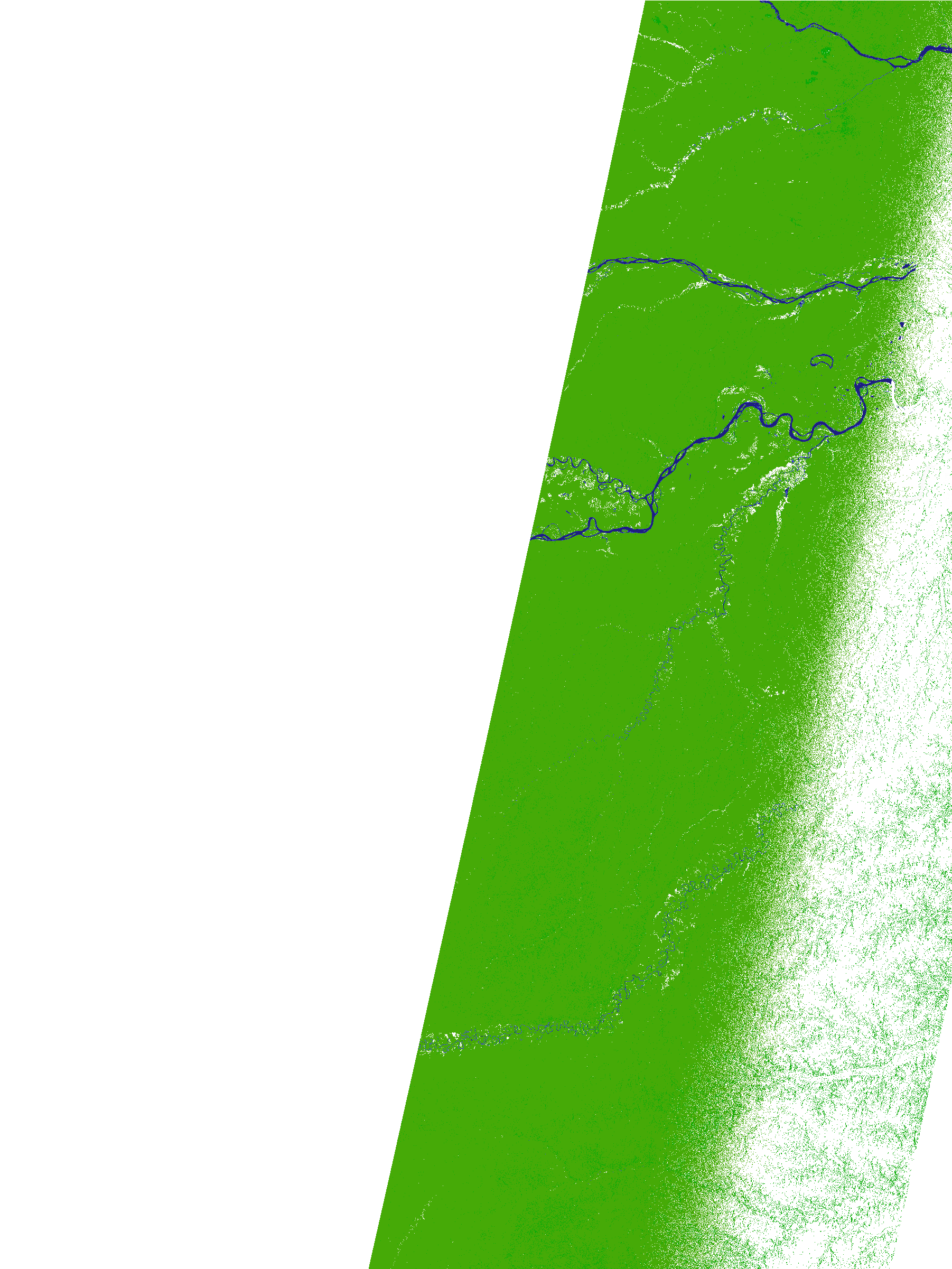 Browse Browse |
| South America (Amazon) | |||
| Amazon JERS-1 High Flood Backscatter Mosaic Learn More | JERS-1 | Mid-1996 | Download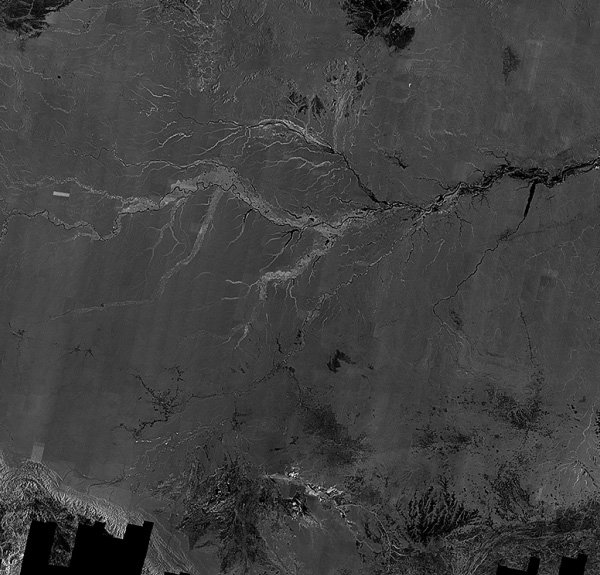 Browse Browse |
| Amazon JERS-1 Low Flood Mosaic Learn More | JERS-1 | Late 1995 | Download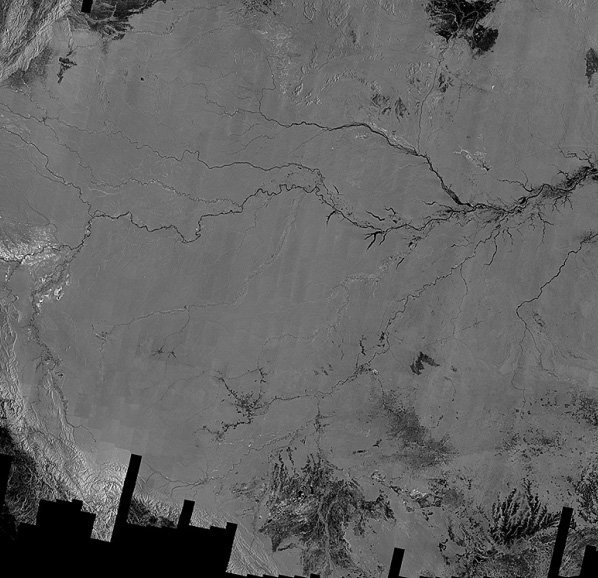 Browse Browse |
| Amazon PALSAR Wetland Extent Maps Learn More | PALSAR | 2006-2011 | Product Map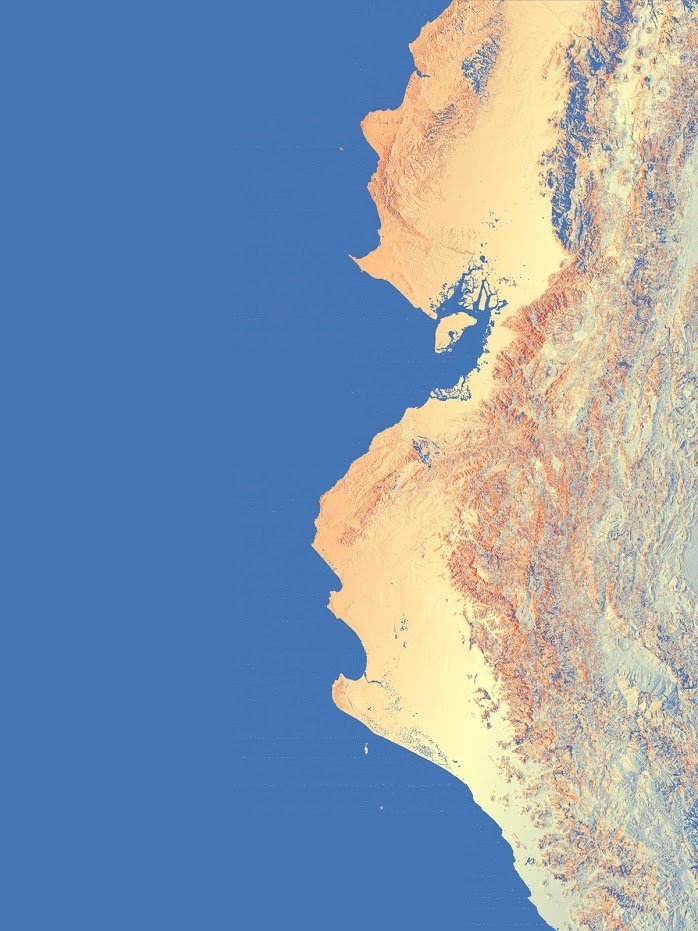 Browse Browse |
| 17L, 17M, 17N, 17P, 18L, 18M, 18N, 18P, 19L, 19M, 19N, 19P, 20K, 20L, 20M, 20N, 20P, 21K, 21L, 21M, 21N, 21P, 22K, 22L, 22M, 22N, 23L, 23M | |||
Surface WAter Microwave Product Series (SWAMPS)
A gridded global surface water fraction product derived from combined passive-active microwave datasets (SSM/I, SSMIS, ERS, QuikSCAT, ASCAT). This dataset is derived using a land cover-supported, atmospherically-corrected dynamic mixture model applied to 20+ years of combined, daily, passive/active microwave remote sensing data.
Two product types are available
(1) Stable (better quality for analysis): Datasets updated monthly once all supporting input data are available. Data from 1992-1999 are bi-monthly. Data from 2000 onward are daily. Summary data include annual maximum and minimum inundation extent and annual inundation duration.
(2) Near-real time (for access to most recent observations): Daily data are available with 2-3 day latency.
Jensen K and McDonald KC (2019). Surface Water Microwave Product Series (SWAMPS) Version 3: A Near-Real Time and 25-year Historical Global Inundated Area Fraction Time Series from Active and Passive Microwave Remote Sensing. IEEE Geoscience and Remote Sensing Letters (Accepted).
Schroeder R, McDonald K C, Chapman B D, Jensen K, Podest E, Tessler Z D, Bohn T J, and Zimmermann R (2015). Development and evaluation of a multi-year fractional surface water data set derived from active/passive microwave remote sensing data. Remote Sensing, 7(12), 16688-16732.
North America JERS-1 Mosaics
L-band HH-polarized backscatter mosaic from the NASDA/JAXA JERS-1 SAR.
Images Copyright (c) 1992-1998 NASDA/MITI Courtesy of the Global Rain Forest Mapping (GRFM) project. The JERS-1 SAR data, images and text are only intended for scientific and/or educational use. Any other use is prohibited under the terms of the NASDA/MITI copyright. If you wish to publish these images for scientific or educational purposes, no permission is required and there is no charge. Please acknowledge the origin of the data by adding “Courtesy of GRFM, (c) NASDA/MITI” below any image published.
More about the GRFM project:
- Rosenqvist A., Shimada M., Chapman B., Freeman A., De Grandi G., Saatchi S., Rauste Y., “The Global Rain Forest Mapping project – a Review,” International Journal of Remote Sensing 21, no. 6&7 (2000): 1375-87.
- Rosenqvist et al., International Journal of Remote Sensing (special issue devoted to the GRFM project) 23, no. 7 (2002).
Alaska Wetlands Map derived from ALOS PALSAR fine beam data.
ALOS PALSAR – High-resolution map of Alaska wetlands. ALOS PALSAR map of wetlands in Alaska with a spatial resolution of 50 m.
Clewley, D., Whitcomb, J., Moghaddam, M., McDonald, K., Chapman, B., Bunting, P. 2015. “Evaluation of ALOS PALSAR Data for High-Resolution Mapping of Vegetated Wetlands in Alaska,” Remote Sensing, no. 7: 7272-7297, doi: 10.3390/rs70607272.
Clewley, D., J. Whitcomb, M. Moghaddam, and K. McDonald, “Mapping the State and Dynamics of Boreal Wetlands using Synthetic Aperture Radar,” in Remote Sensing of Wetlands: Applications and Advances, R. Tiner, M. Lang and V. Klemas (Eds.), CRC Press, March 2015. ISBN 9781482237382.
Alaska Wetlands Map derived from JERS-1 SAR
JERS-1-Landmark, high-resolution map of Alaska wetlands, published in 2009.
The Far North’s vast wetlands both absorb and emit significant amounts of gases involved in climate change—particularly carbon and methane. But as recently as 2008, scientists knew very little about the locations and extent of these often remote and inaccessible ecosystems. So researchers used mosaics of Japanese Earth Resources Satellite (JERS-1) synthetic aperture radar (SAR) imagery to produce this landmark, high-resolution map of Alaska wetlands.
Whitcomb, J., M. Moghaddam, K. McDonald,J. Kellndorfer, and E. Podest, “Mapping Wetlands of Alaska from L-band SAR imagery,” Canadian Journal of Remote Sensing 35, no. 1 (February 2009): 54-72, doi: 10.5589/m08-080.
Amazon Low and High Flood Backscatter Mosaics from JERS-1 SAR
The entire Amazon basin was acquired during both the generally low flood time of the Amazon River in late 1995, and in mid-1996 during a high flood period of the Amazon river.
Contributing to the Global Rain Forest Mapping project, this L-band HH image mosaic below from the NASDA/JAXA JERS-1 SAR has a pixel spacing of 3 arcseconds (about 100 m). The imagery has been enhanced to emphasize the backscatter signature of inundated wetlands. This version of the image mosaic has been corrected for orthorectification errors by Yongwei Sheng, and Douglas E. Alsdorf (Ohio State University). Black areas in this image generally correspond to open water, dark grey to low vegetation, grey to forest or shrublands, and light grey to white to inundated forests or shrublands, or to urban areas. This portion of the dataset covers an area of about 8 million km2 comprising some 2000 NASDA frame images. The same area was covered again in May – August 1996, during a high flood period of the Amazon river.
More on orthorectification of this image mosaic:
- Yongwei Sheng, Alsdorf, D.E., “Automated Georeferencing and Orthorectification of Amazon Basin-Wide SAR Mosaics Using SRTM DEM data,” Geoscience and Remote Sensing, IEEE Transactions on , vol.43, no.8 (Aug. 2005): pp. 1929- 40, doi: 10.1109/TGRS.2005.852160.
More about the GRFM project:
- Rosenqvist A., Shimada M., Chapman B., Freeman A., De Grandi G., Saatchi S., Rauste Y., “The Global Rain Forest Mapping project – a Review,” International Journal of Remote Sensing 21, no. 6&7 (2000): 1375-87.
- Rosenqvist et al., International Journal of Remote Sensing (special issue devoted to the GRFM project) 23, no. 7 (2002).
Time-series Amazon Wetlands Extent Maps derived from PALSAR ScanSAR data
ALOS PALSAR ScanSAR – Classified open water and inundated vegetation of the Amazon Basin 2006-2011; 100m resolution; GeoTIFF tiles, named by UTM zone location.
Chapman, B.; McDonald, K.; Shimada, M.; Rosenqvist, A.; Schroeder, R.; Hess, L. Mapping Regional Inundation with Spaceborne L-‐Band SAR. Remote Sens. 2015, 7, 5440-‐5470.




